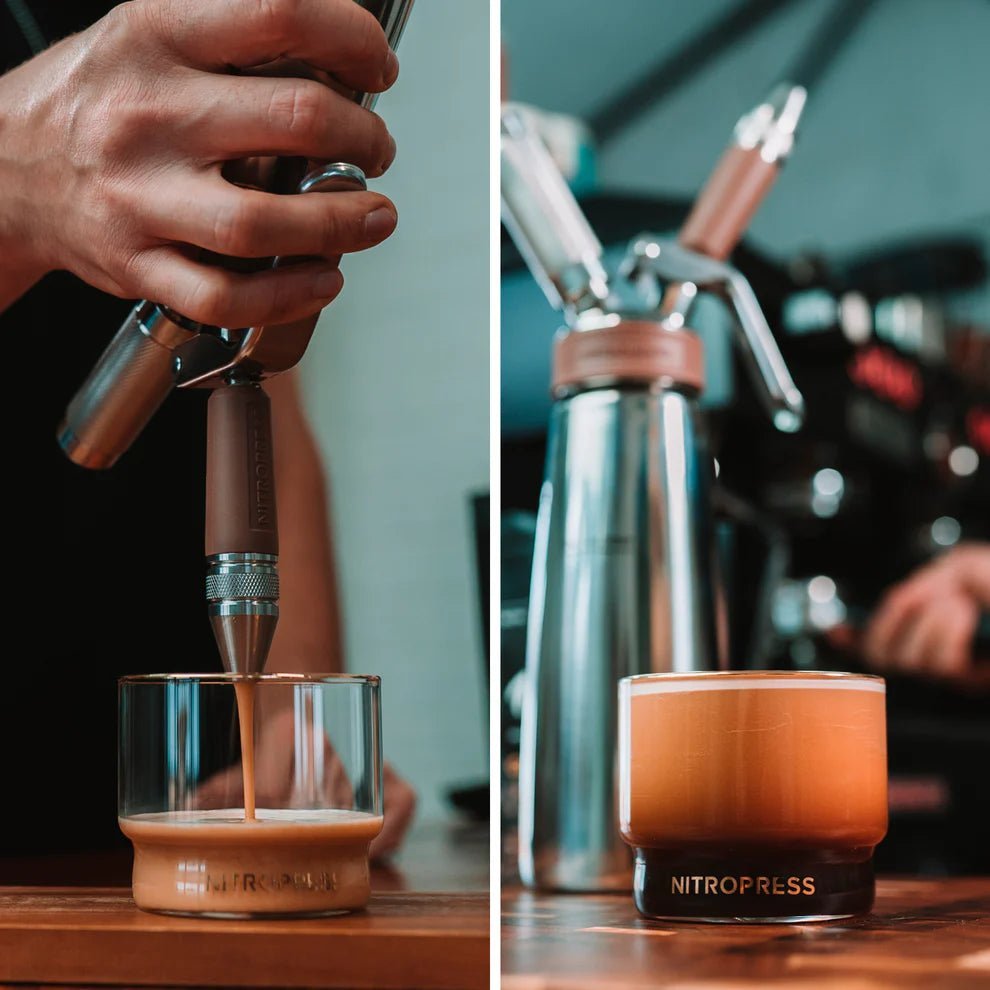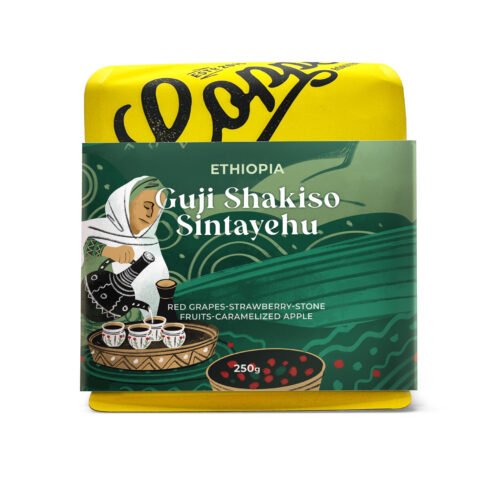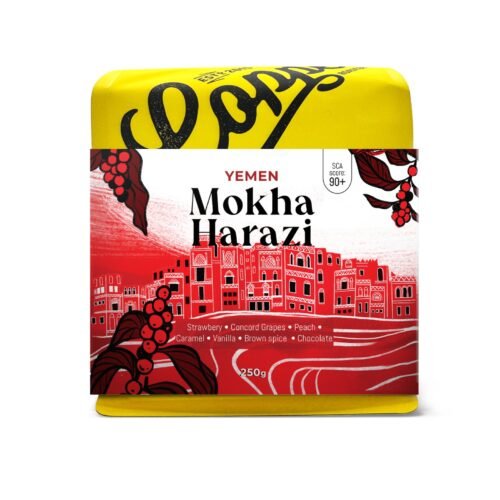Introduction to Single-Origin Coffee
Single-origin coffee refers to coffee that is sourced from a single geographical area, such as a specific country, region, or even a particular farm. This concept stands in stark contrast to blended coffee, which is made from beans sourced from multiple origins to create a uniform flavor profile. The distinctive characteristics of single-origin coffee arise from the unique environmental conditions, processing methods, and cultivation practices specific to its origin. Factors such as soil composition, altitude, climate, and local farming techniques contribute to the flavor nuances found in each batch of beans.
Consumers appreciate single-origin coffee for several reasons. First and foremost, it allows coffee enthusiasts to trace the origins of their beans back to a particular locality, providing a sense of connection to the farmers and the land. This transparency enhances appreciation for the craft of coffee production, as each cup tells a story related to its unique growing conditions. Additionally, the flavor profiles of single-origin coffees can vary significantly, providing an array of tasting experiences for those willing to explore different regions. For instance, Ethiopian beans are often celebrated for their fruity and floral notes, while Colombian coffees may possess a rich, caramel-like sweetness.
Another appealing aspect of single-origin coffee is the focus on quality and artisanal practices. Many producers emphasize sustainable farming methods, direct trade relationships, and meticulous processing standards, which lead to higher-quality beans. Consumers often find that these coffees offer a more vibrant and complex tasting experience compared to their blended counterparts. Additionally, the ability to enjoy seasonal offerings aligns with the concept of freshness and highlights the variability in flavor that comes from different harvests. In summary, single-origin coffee presents a unique opportunity to explore the diverse flavors and stories encapsulated within each cup.
The Importance of Terroir in Coffee
Terroir is a term originally derived from French viticulture, referring to the unique characteristics imparted to agricultural products by their environment. In the realm of coffee, terroir plays a crucial role in determining the flavor profile of coffee beans. Various environmental factors such as soil type, climate, altitude, and even the surrounding flora and fauna contribute significantly to the distinctive flavors found in single-origin coffee.
Soil composition is perhaps one of the most influential elements of terroir. Different soils provide varying amounts of nutrients, minerals, and organic matter that significantly affect the growth of coffee plants. For example, volcanic soils, often found in regions such as Guatemala and Costa Rica, are rich in minerals that can result in a more complex flavor profile in the resulting beans. In contrast, sandy soils may produce coffee with a lighter body but brighter acidity.
Climate factors, including temperature, rainfall, and humidity, also play a vital role in shaping the taste of coffee. Coffee plants flourish in specific climate conditions; for instance, they prefer moderate temperatures and well-distributed rainfall. The microclimates within coffee-growing regions can lead to subtle yet significant taste differences, enhancing the uniqueness of the coffee produced. Moreover, altitude affects not only the temperature but also the growth rate of coffee cherries. Higher altitudes typically bring slower maturation of the fruit, contributing to more developed flavors and acidity.
Furthermore, the interaction between the local ecosystem and coffee cultivation can also affect flavor. The flora and fauna surrounding coffee plants may influence pollination and pest control, thus impacting the overall health and quality of the beans. This synergy ensures that the coffee retains the essence of its origin, making single-origin coffee not merely a beverage but a taste experience reflective of its terroir.
Popular Single-Origin Coffee Regions
Single-origin coffee has gained immense popularity among coffee enthusiasts, largely due to its distinct flavors intrinsic to the region of production. Various regions across the globe are renowned for their unique contributions to the coffee world. Ethiopia, often regarded as the birthplace of coffee, is a prime example. Ethiopian coffees are typically characterized by their bright acidity and vibrant floral notes. Grown at high altitudes, the coffee beans benefit from the ideal climate conducive to developing complex flavor profiles, including hints of berries and citrus. The cultural significance of coffee in Ethiopia cannot be overstated; it plays an integral role in traditional ceremonies and daily social interactions.
Another prominent region is Colombia, which is known for producing some of the smoothest coffees globally. Colombian coffee is typically well-balanced, featuring a rich and nutty flavor profile with a mild acidity. The country’s diverse climates and rich volcanic soils contribute significantly to the coffee’s quality. Colombian farmers often employ sustainable practices, which not only improve the flavor but also promote environmental stewardship. The cultural legacy of coffee in Colombia is deeply embedded in the national identity, with festivals celebrating coffee harvests being commonplace.
Lastly, Jamaica is famous for its Blue Mountain coffee, considered one of the most sought-after coffees worldwide. The distinct growing conditions in the Blue Mountains, characterized by misty, temperate weather and rich soil, yield coffee beans with a gentle sweetness and mild flavor. The reputation of Jamaican coffee is bolstered by its limited supply and strict quality control measures, ensuring that only the finest beans are harvested. This region’s coffee culture is closely intertwined with its social traditions, often celebrated in local gatherings and tourism.
Understanding these regions not only enhances appreciation for single-origin coffee but also provides insights into the diverse flavors that coffee can offer. Each location contributes its own narrative to the cup, making the experience of single-origin coffee uniquely enriching.
Flavor Profiles and Tasting Notes
Single-origin coffee is distinguished not only by its geographical provenance but also by the diverse flavor profiles it presents. Each coffee-producing region imparts unique characteristics to the beans, influenced by factors such as climate, soil, and elevation. Understanding these flavors can significantly enhance the coffee tasting experience.
Fruity notes are often found in coffees from regions like Ethiopia and Kenya, where beans benefit from the edge of high altitudes and rich volcanic soil. These coffees may exhibit flavors resembling berries, citrus, or stone fruits. For instance, Ethiopian Yirgacheffe is renowned for its vibrant blueberry hints, while Kenyan AA often boasts a bright, refreshing acidity with lemon or grapefruit undertones.
In contrast, coffees from Latin America, such as Colombian or Guatemalan varieties, typically offer a balanced profile that may include nutty or chocolatey flavors. Colombian coffees, for example, are recognized for their smooth, mild sweetness, often reminiscent of caramel or toasted nuts. Meanwhile, Guatemalan coffees can evoke a more complex flavor, showcasing cocoa, toffee, or even spice-like undertones that characterize their profiles uniquely.
Additionally, some regions, like Sumatra and Sulawesi in Indonesia, are celebrated for their earthy and herbal notes, imparting a rich body and low acidity. A Sumatra coffee might present flavors akin to dark chocolate, herbs, or even a hint of tobacco. Understanding these tasting notes enables coffee enthusiasts to appreciate the nuances present in different single-origin coffees.
To fully experience these flavor profiles, it is recommended to engage in a systematic tasting process, often called cupping. Start by allowing the coffee to bloom to release aromatic oils, then savor the initial taste, and finally note the aftertaste. Each step reveals more about the coffee’s unique flavor characteristics, enhancing your overall appreciation of single-origin coffees.
Brewing Techniques for Single-Origin Coffee
When it comes to brewing single-origin coffee, the method employed can significantly impact the extraction of flavors, allowing the unique characteristics of the beans to shine through. Each brewing technique offers different advantages, highlighting various flavor profiles inherent in single-origin coffee.
The pour-over method is widely appreciated for its ability to produce a clean cup of coffee. This technique involves pouring hot water over coffee grounds in a controlled manner, allowing for a consistent extraction. Using a medium to medium-fine grind size is crucial, as it helps balance the extraction rate. The water temperature should ideally be between 195°F to 205°F. A steady pour over a duration of three to four minutes is recommended, allowing the flavors of the single-origin beans to develop fully while minimizing bitterness.
Another popular method is the French press, which is ideal for those who prefer a robust cup of coffee. This technique uses a coarser grind, usually around the size of sea salt. The single-origin coffee grounds are steeped in hot water for about four minutes before pressing down the plunger. The result is a rich and full-bodied beverage that captures the essence of the chosen beans. Water temperature is similarly important here; maintaining it in the 200°F range enhances flavor extraction and overall quality.
The AeroPress is another versatile brewing device that allows coffee enthusiasts to experiment with various brewing parameters. With a fine grind size and a short brew time of roughly one to two minutes, the AeroPress can produce coffee that emphasizes clarity and sweetness. Depending on the brewing style, users can alter factors such as temperature and pressure, offering an array of flavor profiles with a single-origin coffee.
In essence, choosing the right brewing technique, along with attention to grind size, water temperature, and brewing time, greatly influences the experience of single-origin coffee. Each method presents unique pathways to explore the intricate flavors locked within these specially sourced beans.
The Role of Sustainability in Single-Origin Coffee
Sustainability has increasingly become a focal point in discussions surrounding the global coffee market. As consumers become more environmentally conscious, the demand for ethical sourcing and sustainable farming practices has grown significantly. Single-origin coffee, which is derived from a specific region or farm, often embodies these principles of sustainability. This type of coffee enables consumers to not only enjoy unique flavors and aromas, but also to support environmentally responsible cultivation and fair trade practices.
Farmers who produce single-origin coffee typically showcase a commitment to sustainable agriculture. Many adhere to organic farming methods, which eschew synthetic pesticides and fertilizers, thereby preserving local ecosystems and promoting biodiversity. This practice has a direct positive influence on the environment, as it helps maintain soil integrity and minimizes chemical runoff, which can pollute waterways and harm wildlife.
Furthermore, single-origin coffee is often linked to fair trade practices that ensure farmers receive fair compensation for their labor. By choosing single-origin coffee, consumers can contribute to a more equitable supply chain that empowers growers and uplifts communities. Fair trade initiatives focus not only on providing better prices but also on fostering long-term relationships between coffee producers and buyers, enhancing economic stability for farming families.
As ethical consumption becomes more paramount, single-origin coffee emerges as a preferred choice for conscientious consumers. The intersection between single-origin sourcing and sustainability offers an opportunity for individuals to make informed decisions that positively impact the environment and support farmers. By contemplating the provenance of their coffee, consumers actively participate in promoting sustainable practices within the industry while savoring the distinctive characteristics that single-origin varieties provide.
How to Choose Quality Single-Origin Coffee
When selecting quality single-origin coffee, there are several factors to consider that can significantly influence the flavor and overall experience of your brew. First and foremost, paying attention to the roasting date is crucial. Freshness plays a vital role in the taste of coffee; therefore, it is advisable to choose beans that have been roasted recently, ideally within the last few weeks. Most packaging includes a roast date, so checking this date will ensure you are getting the freshest product available.
In addition to roasting dates, understanding certifications can also guide your choice. Look for certifications such as Fair Trade, Rainforest Alliance, or Organic, which signify that the coffee has been grown and harvested according to certain ethical and environmental standards. These certifications not only indicate quality but also ensure that the farmers are compensated fairly and that sustainable practices are followed. By opting for certified coffee, you can enjoy your beverage with a clear conscience.
Packaging information provides additional insights into the quality of single-origin coffee. Quality bags should be sealed and often feature a one-way valve, which allows gases to escape while keeping air out. This is important for maintaining the beans’ freshness after roasting. Furthermore, seeking out reputable roasters can make a significant difference. Do your research to find roasters known for their commitment to sourcing high-quality beans directly from farmers. Reputable roasters often share information about the origin of beans, processing methods, and flavor notes, which can help you select a coffee that meets your preferences.
Finally, when examining labels, look for details regarding the coffee’s origin, variety, and flavor profile. The more information available, the better equipped you will be to choose a single-origin coffee that aligns with your taste. By being mindful of these elements, you can elevate your coffee-drinking experience and truly appreciate the unique flavors that single-origin coffee has to offer.
Single-Origin Coffee Tasting Events and Community
Single-origin coffee has garnered a dedicated following among enthusiasts, often resulting in vibrant local communities that come together to celebrate and explore its diverse flavors. Tasting events centered around single-origin coffee provide an opportunity for aficionados and casual drinkers alike to engage in a shared experience, deepening their appreciation for this unique beverage. These events typically feature curated selections of coffees sourced from specific regions, allowing participants to discern subtle differences in flavor profiles that characterize beans from various origins.
Moreover, single-origin coffee tasting events often include guided sessions led by knowledgeable baristas or roasters, who share insights into the cultivation, processing, and brewing of the featured coffees. Attendees are encouraged to discuss their sensory experiences, fostering an environment of shared learning and discovery. This interactive approach not only enhances participants’ understanding of the complexities involved in single-origin coffee but also cultivates a sense of camaraderie among those with similar interests.
Community plays a critical role in the enjoyment of single-origin coffee. Many coffee clubs exist, where members regularly meet to sample new beans, exchange brewing techniques, and explore the cultural significance behind different coffee-growing regions. These gatherings create a supportive network, enhancing the social aspect of coffee drinking by encouraging friendships and collaborations among coffee lovers. Moreover, through popular online platforms, enthusiasts can connect beyond their immediate surroundings, sharing their tastes, favorite sources, and brewing methods with a global audience.
As the appreciation for single-origin coffee continues to grow, events and communities dedicated to its exploration will remain vital, allowing individuals to bond over their passion for this remarkable beverage. By attending these gatherings, coffee lovers not only enrich their palate but also contribute to a larger movement that celebrates the artistry of diverse coffee growers from around the world.
Conclusion: The Journey of Single-Origin Coffee
In wrapping up our exploration of single-origin coffee, it becomes clear that this distinct category of coffee not only captivates the palate but also narrates a rich tapestry of cultural heritage and environmental significance. Single-origin coffees, sourced from specific regions or farms, provide consumers with the opportunity to experience unique flavor profiles that vary widely depending on their geographical origins, processing methods, and cultivation techniques. This singular approach to coffee sourcing emphasizes the nuances of taste, allowing enthusiasts to appreciate the complexity that comes from a focused geographical area.
Moreover, engaging with single-origin coffee often encourages a deeper connection to the provenance of one’s brew. Each cup embodies the stories of local farmers and their dedication to sustainable practices, enriching the journey of coffee appreciation. This conscious choice fosters a sense of responsibility towards ethical consumption and supports the livelihoods of producers committed to quality over quantity. Therefore, by opting for single-origin coffee, consumers not only savor an exceptional beverage but also contribute to the broader narrative of cultural respect and environmental stewardship.
We encourage all coffee lovers to venture into the diverse world of single-origin coffees. By experimenting with various beans, whether from the highlands of Ethiopia or the lush landscapes of Colombia, drinkers can uncover a multitude of flavor experiences that tell a story with each sip. The journey of single-origin coffee is a celebration of diversity in flavor, culture, and ethical consideration, presenting an enriching experience that transcends the act of simple consumption. As you delve into this coffee exploration, may you find joy in the discovery and appreciation of every unique cup.












